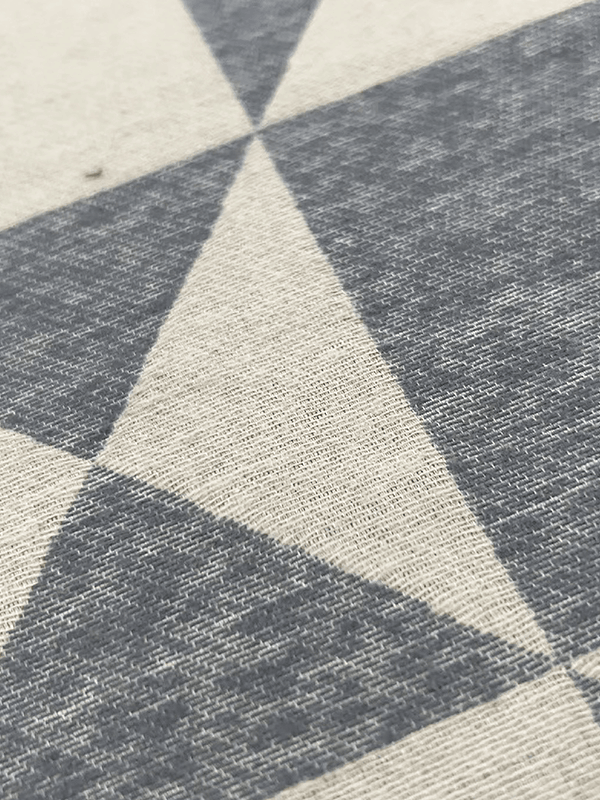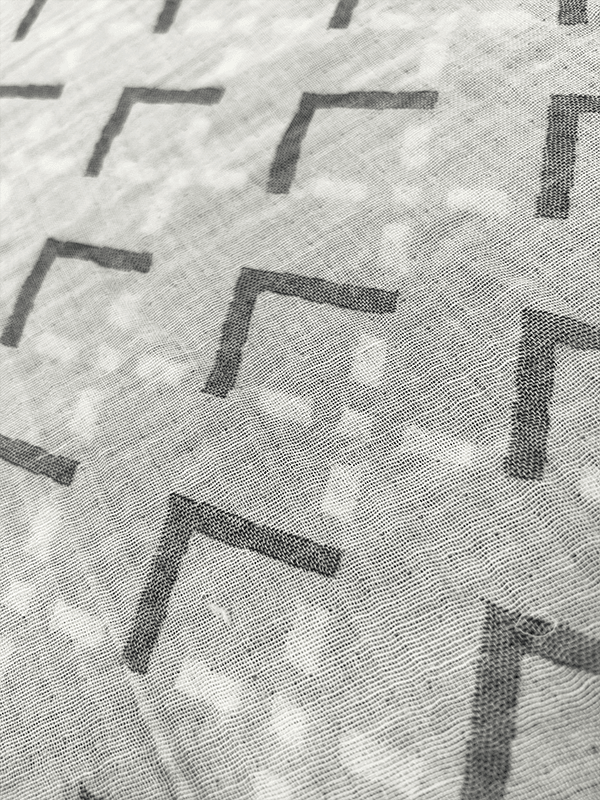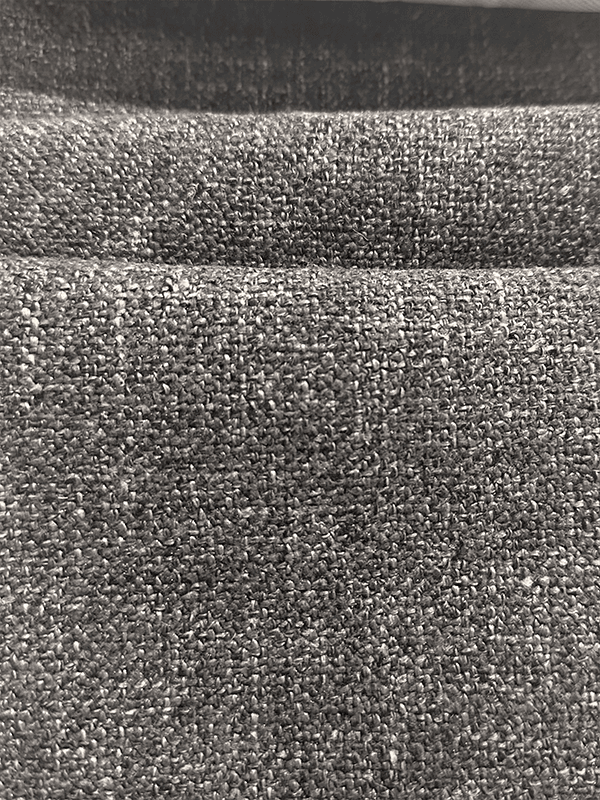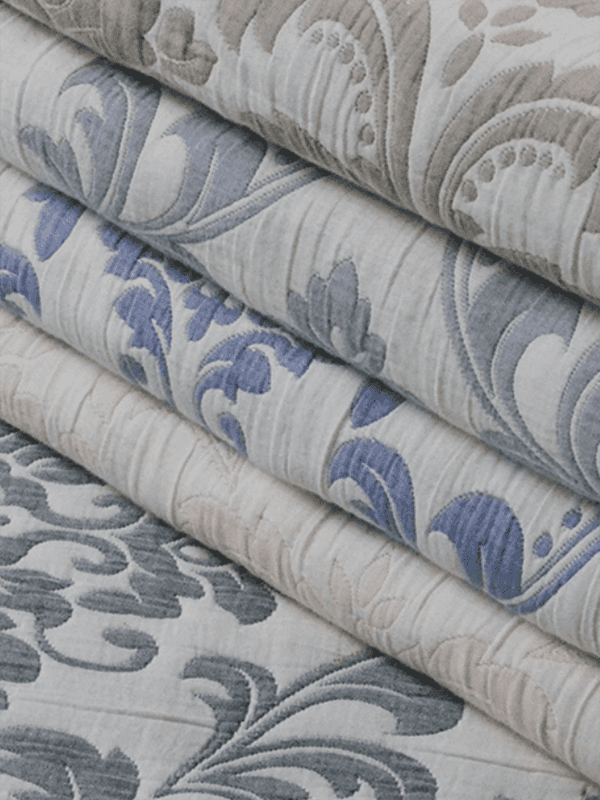Cotton has long been one of the most popular natural fibers in the world, valued for its softness, breathability, and comfort. When combined with the intricate weaving technique of jacquard, cotton transforms into a fabric that is not only functional but also visually captivating. Cotton jacquard fabric has gained widespread popularity in apparel, home textiles, and decorative applications due to its unique patterns, luxurious feel, and durability. This article explores the characteristics, benefits, and applications of cotton jacquard fabric, highlighting why it continues to be a favorite among designers, manufacturers, and consumers.
1. Understanding Cotton Jacquard Fabric
Cotton jacquard fabric is created using the jacquard weaving technique, which allows for the creation of complex patterns and textures directly on the fabric. Unlike printed or embroidered fabrics, jacquard designs are woven into the fabric itself, resulting in intricate patterns that are durable and long-lasting.
- Jacquard Weaving Process: Named after Joseph Marie Jacquard, who invented the Jacquard loom in the early 19th century, this technique uses a loom with a punched card system to control individual warp threads. This enables the weaving of highly detailed patterns, including florals, geometric designs, damasks, and paisleys.
- Material Composition: Cotton fibers are the primary component, which provides natural softness, breathability, and comfort. Cotton jacquard can be blended with other fibers such as polyester or silk to enhance strength, elasticity, or sheen.
The combination of cotton’s natural qualities and the jacquard weaving technique produces a fabric that is both beautiful and functional.
2. Key Characteristics of Cotton Jacquard Fabric
Cotton jacquard fabric possesses several distinctive characteristics that make it highly desirable in fashion, interior design, and other industries:
a. Intricate Patterns and Textures
Jacquard weaving allows for complex designs to be integrated into the fabric. These patterns can range from subtle tonal effects to bold, elaborate motifs. The raised or embossed texture adds depth and visual interest, giving the fabric a premium, luxurious appearance.
b. Softness and Comfort
Thanks to the natural properties of cotton, jacquard fabrics are soft and gentle on the skin. They are breathable and absorbent, making them comfortable for both clothing and home textiles.
c. Durability
Because the patterns are woven into the fabric rather than printed, cotton jacquard fabric is resistant to fading and wear. The strong interlacing of threads enhances the overall strength of the fabric, making it suitable for long-lasting applications such as upholstery, drapery, and high-quality garments.
d. Versatility
Cotton jacquard can be lightweight or heavy, matte or slightly lustrous, depending on the yarn type and weave density. This versatility allows it to be used in a variety of products, from delicate apparel to durable home furnishings.
e. Easy Care
Cotton jacquard fabrics are generally easy to care for. Most can be machine-washed, ironed at moderate temperatures, and maintained without special treatments. Blended variants may have additional benefits such as wrinkle resistance or improved elasticity.

3. Advantages of Cotton Jacquard Fabric
Cotton jacquard fabric combines the natural benefits of cotton with the sophisticated qualities of jacquard weaving, offering several advantages:
a. Aesthetic Appeal
The intricate, woven patterns give cotton jacquard a refined and elegant look. Whether used in clothing, bedding, or upholstery, it adds a touch of sophistication and luxury that printed fabrics often cannot achieve.
b. Long-Lasting Patterns
Unlike printed fabrics where designs may fade or wear off, jacquard patterns are permanent and maintain their clarity even after repeated washing and prolonged use.
c. Comfortable and Breathable
Cotton’s natural properties ensure that jacquard fabrics are comfortable for daily wear and suitable for warm climates. The fabric allows air circulation, reducing the risk of overheating and moisture accumulation.
d. Versatile Applications
The fabric can be produced in various weights and textures, making it suitable for a wide range of applications, including fashion, home décor, and luxury items.
e. Eco-Friendly
Being primarily composed of natural cotton fibers, cotton jacquard fabric is biodegradable and more environmentally friendly than synthetic alternatives, particularly when organic cotton is used.
4. Applications of Cotton Jacquard Fabric
The combination of elegance, durability, and comfort makes cotton jacquard fabric suitable for numerous applications across multiple industries.
a. Apparel Industry
- Formal Wear: Cotton jacquard is ideal for shirts, dresses, skirts, and suits due to its elegant patterns and comfortable feel.
- Traditional and Ethnic Wear: The fabric is often used in saris, tunics, and ethnic garments, where intricate designs enhance visual appeal.
- Accessories: Scarves, ties, and handbags made from cotton jacquard add a luxurious touch to outfits.
b. Home Textiles
- Bedding: Cotton jacquard sheets, pillowcases, and bedspreads offer softness, durability, and aesthetic appeal.
- Curtains and Drapery: The fabric’s intricate patterns and texture make it ideal for decorative window treatments.
- Upholstery: Chairs, sofas, and cushions benefit from the fabric’s strength and visual elegance.
c. Luxury and Decorative Items
Cotton jacquard is used for decorative table linens, wall hangings, and premium gift wraps, where its rich texture and durability enhance the overall presentation.
d. Corporate and Institutional Use
Hotels, restaurants, and event planners often use cotton jacquard fabrics for uniforms, tablecloths, and drapery due to their professional appearance and long-lasting quality.
5. Different Types of Cotton Jacquard Fabric
Cotton jacquard fabrics vary based on weave patterns, yarn types, and finishing techniques:
a. Damask Jacquard
Features reversible patterns and is often used in bedding, table linens, and upholstery.
b. Brocade Jacquard
Richly textured with raised patterns, commonly used for formal clothing and decorative textiles.
c. Lightweight Jacquard
Soft and breathable, suitable for blouses, shirts, and summer garments.
d. Heavyweight Jacquard
Thicker and more durable, ideal for upholstery, curtains, and winter apparel.
e. Blended Jacquard
Cotton blended with silk, polyester, or other fibers for added sheen, elasticity, or wrinkle resistance.
6. Care and Maintenance Tips
Maintaining cotton jacquard fabric properly ensures its longevity and preserves its appearance:
- Washing: Machine wash with mild detergent on a gentle cycle. Avoid harsh chemicals that may weaken fibers.
- Drying: Air-dry or tumble-dry on low heat to prevent shrinkage.
- Ironing: Use moderate heat; steam can help remove wrinkles without damaging the woven patterns.
- Storage: Store in a dry, cool place to prevent mold or discoloration.
Blended variants may require specific care instructions based on the additional fibers used.
7. Why Cotton Jacquard Fabric Remains Popular
Several factors contribute to the enduring popularity of cotton jacquard fabric:
- Timeless Elegance: The intricate woven patterns provide a classic and sophisticated look suitable for various settings.
- Functional Comfort: Softness, breathability, and durability make it suitable for both apparel and home textiles.
- Eco-Friendly Nature: Being primarily cotton, it aligns with the growing demand for sustainable and biodegradable fabrics.
- Versatility: Available in different weights, textures, and patterns, cotton jacquard adapts to diverse applications.
- Long-Term Investment: Its durability and resistance to fading ensure products retain quality over time.
These attributes make cotton jacquard fabric a favorite among designers, manufacturers, and consumers who value both aesthetics and functionality.
8. Conclusion
Cotton jacquard fabric represents a perfect marriage between natural comfort and intricate design. Its ability to combine elegance, durability, and versatility makes it suitable for a wide range of applications, from fashion and home décor to luxury and institutional use. The woven patterns are long-lasting, the texture is visually appealing, and the cotton base ensures comfort and breathability.
As the textile industry continues to innovate, cotton jacquard remains a fabric that blends traditional weaving artistry with modern functionality, appealing to consumers who seek both style and substance. Whether in apparel, bedding, upholstery, or decorative items, cotton jacquard fabric exemplifies the perfect balance of beauty, comfort, and durability.

 English
English 中文简体
中文简体 Español
Español عربى
عربى













